By Agnese Sartor, Helena Sinibaldi and Michał Tomczuk
Located in the horn of Africa, Ethiopia is a country with a long tradition of Christian manuscript illustration. This vigorous tradition is strongly intertwined with the introduction of Christianity in the country and draws from a broader heritage that developed in various parts of the Mediterranean world from late Antiquity onward. Indeed, the powerful Ethiopian empire had access to a wide network of book production that included centres such as Alexandria and Jerusalem.
Two illustrated books, which take their name from the monastery of Enda Abba Garima, in northern Ethiopia, where they are located, provide evidence of this tradition. The two manuscripts, known as Garima I (AD 530–660) and Garima III (AD 330–650) offer the earliest surviving witnesses of a translation of the gospel text from Greek into the Ge‘ez language (classical Ethiopian). Garima I and Garima III feature a version of the Canon Tables devised by Eusebius of Caesarea, to give readers an overview of the similarities and differences between each gospel (Fig. 1). They are preceded by a letter that explains their function to a man called Carpianus. The Canon Tables make evident the unity of the separate Gospel accounts, so as to make the general truthfulness of the New Testament more evident.
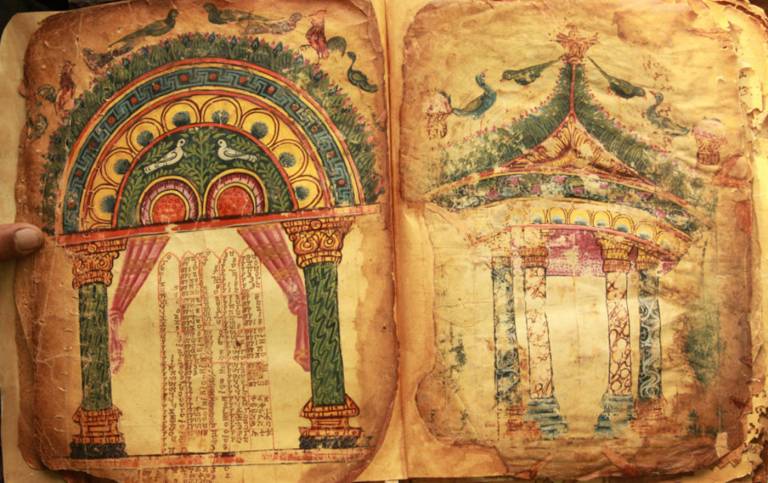
Fig. 1. A Gospel book decorated with a Canon Table (left) and a Tempietto (right), Ethiopic, ca. 6th –7th century (?), Abba Garima Monastery, fols. 5v-6r (Photo: Michael Gervers, courtesy of the DEEDS project)
In the Christian tradition the Canon Tables and preceding epistle are inserted under arches, lavishly decorated with floral and faunal motifs and sometimes also with additional vignettes on the sides of the columns, which depicted important stories from the Bible. Motifs, such as the flowering plants on the vaults of the arches, or the birds perched on top and around them, were meant to evoke paradisiacal connotations (Fig. 2). As evident in the leaf with the Letter to Carpianus in Abba Garima I, ornaments were also employed to convey a more elevated aesthetic effect.
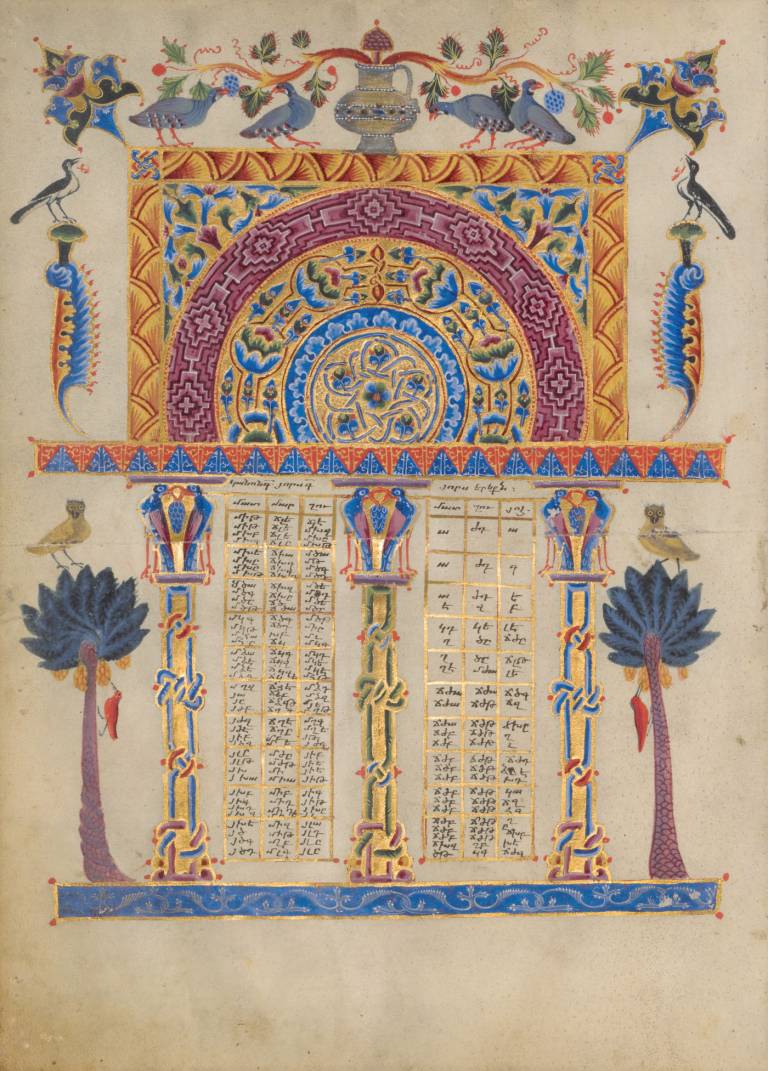
Fig. 2. Detached leaf with a Canon Table from the Zeyt'un Gospels, Armenian, 1256 CE, The J. Paul Getty Museum, Ms. 59, fol. 3v (Photo: courtesy of the Getty's Open Content Program)
The Eusebian Canon Tables functioned as an analytical pathway to understanding the harmony of the Four Gospels. In parallel, the illustrations which accompanied them helped to express the belief in Christ’s resurrection and eternal life. The arched decorations also acted as pathways towards a Tempietto situated at their end which served as a standalone signifier for the aforementioned beliefs. This building also appears within the illustrated manuscript tradition of Ethiopia from the Christian Aksumite to the early Solomonic period (Fig. 3).
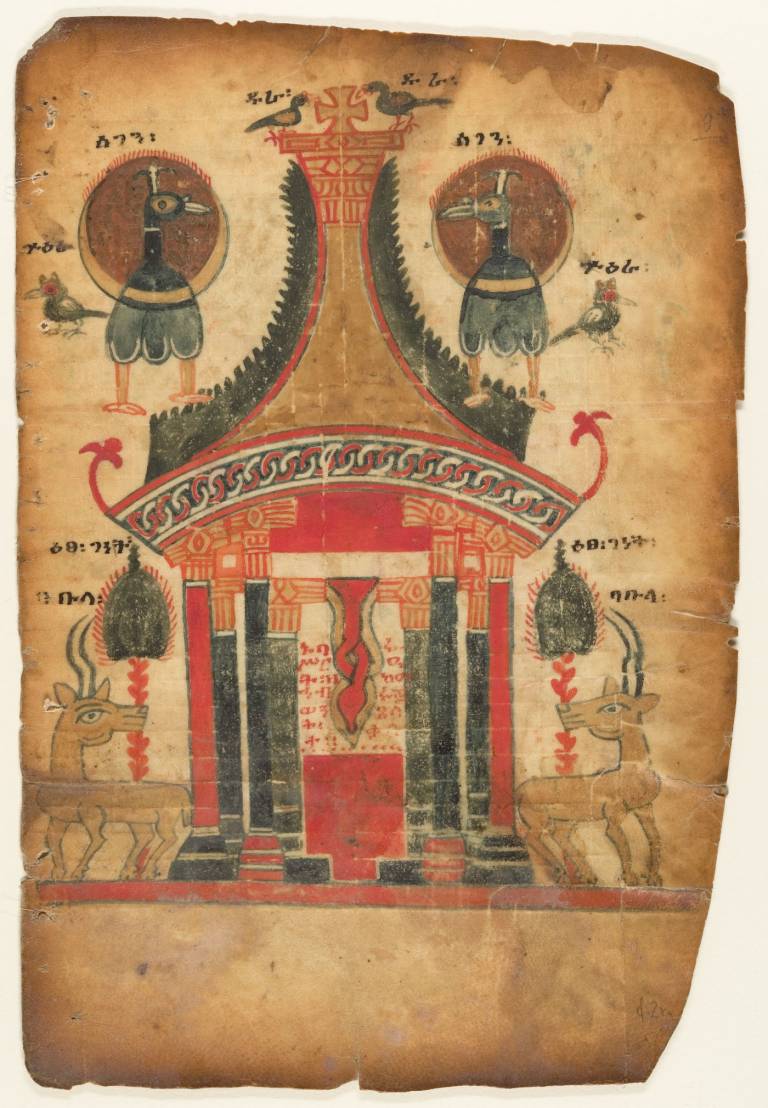
Fig. 3. Detached leaf from an Ethiopic gospel book decorated with a Tempietto, early 15th century, The Metropolitan Museum of Art, acc. no. 2006.100 (Photo: courtesy of The Metropolitan Museum of Art Open Access Program)
The Tempietto acts as a figurative signifier of the Gospels’ unity. At times a literal formulation of this aim was inserted within the illustration, as in the case of a manuscript fragment in Addis Ababa (National Library, MS 28), where the following text is inserted within the building: “Arrangement of the Order concerning how the saying of the Four Gospels Agree” (Gnisci 2020: 90). By adding new elements to the structure, artists could also transpose the symbols of the garden of Eden onto existing local sacred sites. Thus, for example, in the Latin West the Tempietto could be used to allude to the Lateran baptistery in Rome (Fig. 4). In many traditions, the building must have been also equated to the structure built around the tomb of Jesus Christ in the Church of the Holy Sepulchre in Jerusalem.
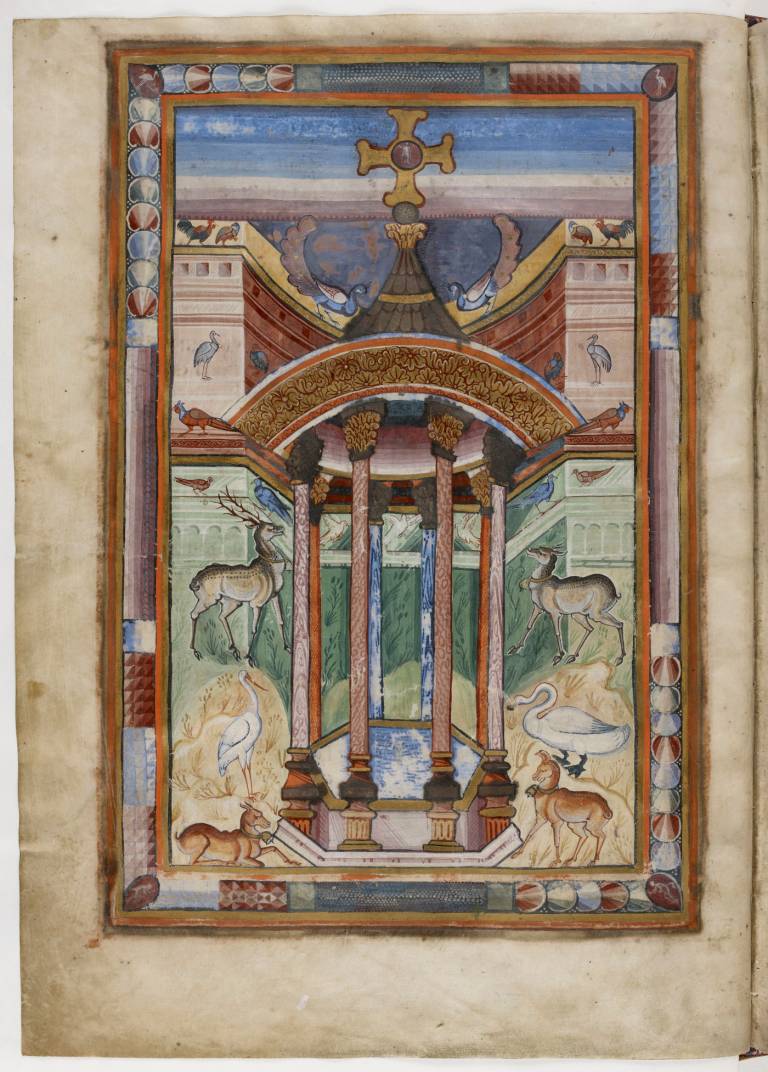
Fig. 4. A Gospel book decorated with a Tempietto represented as the Fountain of Life, first quarter of the 9th century, Bibliothèque nationale de France, MS Lat. 8850, fol. 6v (Photo: courtesy of Gallica – The BnF digital library)
The image of the Tempietto is typically located after the Canon Tables. This is also the case with the two Garima Gospels, although the buildings which decorate these two manuscripts present significant iconographical differences. The Tempietto in Garima I (Fig. 1) is a tholos – a circular structure in which four columns support a roof, a motif which suggests that the four gospels are the supporting pillars of the Church and which appears in the majority of illuminated Ethiopian Gospel books from the Early Solomonic Period (Fig. 3).
Unlike the Tempietto in Garima I, the building in Garima III is a solid rectangular building with a pitched roof that features, according to a recent book by Judith McKenzie and Francis Watson (2016), distinctively Ethiopian architectural characteristics (Fig. 5). The absence of natural details such as the birds and flowers that characterise the tholos in Abba Garima I, suggests that the building had a different symbolic meaning. It has a tall podium made of grey bricks and a staircase of nine steps connects the building to the ground. On both sides of the staircase slender white harts poke their heads from two arches. At the top of the staircase, the main door is flanked by marble columns and surmounted by a sharp steep tympanum. A knotted curtain hangs from the doorway, partly covering the entrance. In the centre of the main walls, two small square windows link the building with traditional Ethiopian architectonic elements appearing on Aksumite graves. Along the top of the walls, a row of windows framed by short arches – a motif that reminds viewers of the Canon Tables – reveals seven lamps hanging from the ceiling. An imposing trapezoidal roof surmounts the whole building painted with an alternation of grey circular tiles and lighter long smooth brushstrokes.
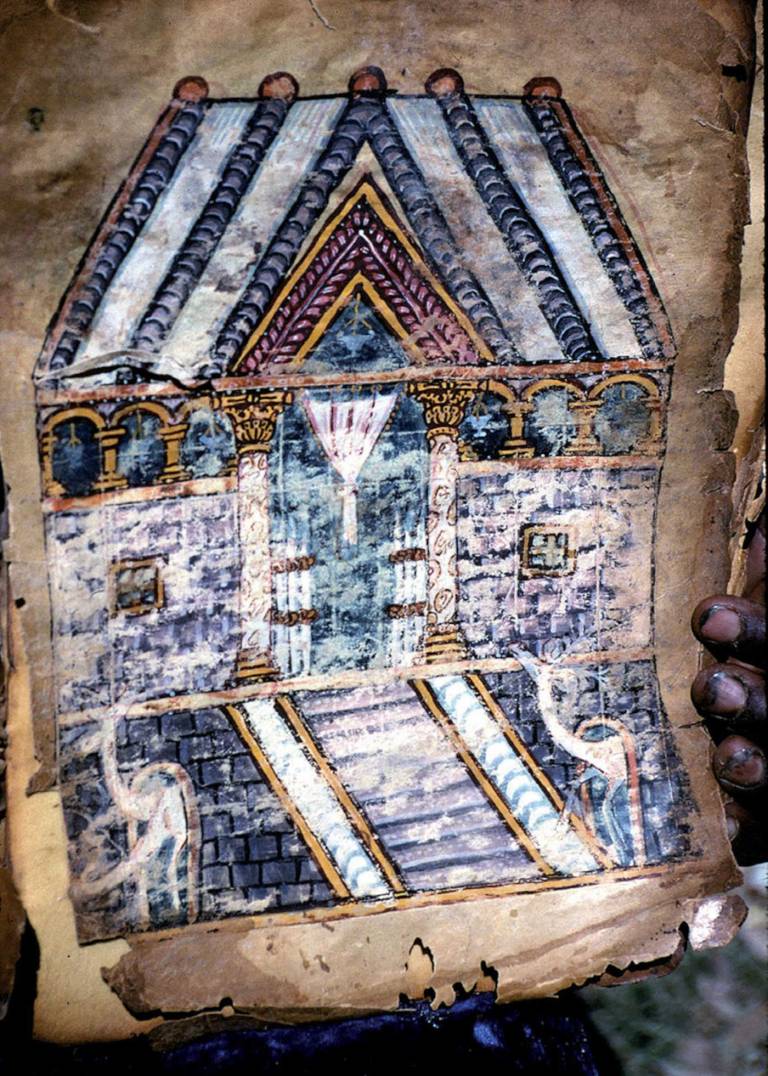
Fig. 5. A Gospel book decorated with a a Tempietto, Ethiopic, ca. 4th –7th century (?), Abba Garima Monastery, Garima III, fols. 5v (Photo: Michael Gervers, courtesy of the DEEDS project)
No similar versions of this image survive, and its exact signification remains an enigma. McKenzie and Watson (2016) interpret the building as Solomon’s temple of Jerusalem, recognizable for similarities to textual sources from the Old Testament, such as the vision of Ezekiel of a future restored temple and the book of Kingdoms. In their view, there are two streams of water springing from the temple and flowing on the side of the steps that evoke Psalm 42, thus associating the harts approaching the water as faithful quenching their thirst with baptismal water. Another interpretation for the building has been offered by Jacques Mercier (2021), who identifies it as a sanctuary of light in view of the bright colours inside the temple and the seven lamps hanging from the arches. The lamps signal that a liturgy is going on within the sanctuary, which turns out to be the sanctuary of the Light-Verb: light brings knowledge, which makes the Word visible. The first interpretation connects the building with Jerusalem: instead of reproducing the tholos shaped Tempietto that visually recalls the sacred sepulchre, the image refers to Solomon’s temple in Christian terms. The second meaning connects the image with the four Gospels which enlighten the Word to the faithful.
References
Gnisci, Jacopo. ‘Christian Ethiopian Art’. Smarthistory, 22 December 2016. https://smarthistory.org/christian-ethiopian-art/.
Gnisci, Jacopo. ‘An Ethiopian Miniature of the Tempietto in the Metropolitan Museum of Art: Notes on Its Relatives and Symbolism’. In Canones: The Art of Harmony: The Canon Tables of the Four Gospels, edited by Alessandro Bausi, Bruno Reudenbach, and Hanna Wimmer, 67–98. Studies in Manuscript Cultures 18. Berlin: De Gruyter, 2020.
McKenzie, Judith S., and Francis Watson. The Garima Gospels: Early Illuminated Gospel Books from Ethiopia. Manar Al-Athar Monograph 3. Oxford: Manar Al-Athar, 2016.
Mercier, Jacques. ‘Les Deux Types d’édicules Associés Aux Canons d’Eusèbe: Apport Des Évangiles d’Abba Gärima (c. 450–650) à Leur Histoire et Leurs Symboliques Byzantines et Latines’. Cahiers Archéologiques: Fin de l’Antiquité et Moyen Âge, 2021, 29–54.
Underwood, Paul A. ‘The Fountain of Life in Manuscripts of the Gospels’. Dumbarton Oaks Papers 5 (1950): 41–138.
Bio
Agnese Sartor is a UCL HoA alumna. She completed her BA in 2021 and is now pursuing medieval history of Art in her MA.
Helena Sinibaldi is a UCL HoA alumna.
Michał Tomczuk is a UCL HoA and Philosophy alumnus.
 Close
Close

